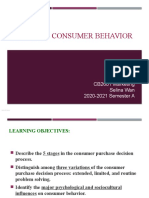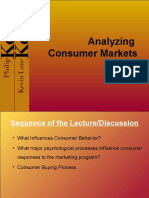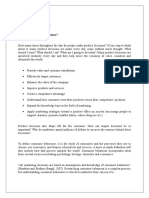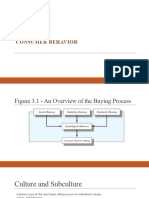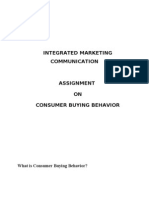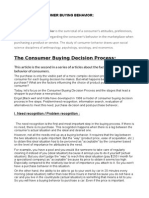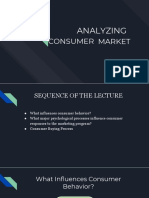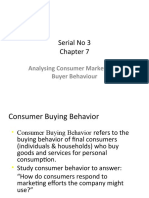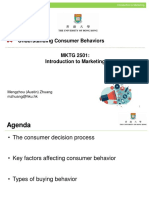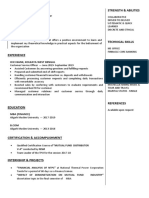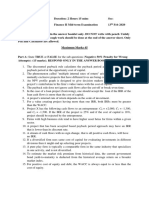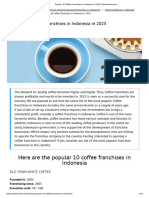0% found this document useful (0 votes)
20 views30 pagesConsumer Behavior
Chapter 4 discusses consumer behavior, focusing on the stages of the consumer purchase decision process, including problem recognition, information search, evaluation of alternatives, purchase, and post-purchase evaluation. It highlights the various influences on consumer behavior, such as psychological, situational, personal, and sociocultural factors, as well as the importance of understanding these influences through data and analytics. The chapter also distinguishes between routine, limited, and extended problem solving in purchasing decisions.
Uploaded by
Abdelrhman ShreifCopyright
© © All Rights Reserved
We take content rights seriously. If you suspect this is your content, claim it here.
Available Formats
Download as PDF, TXT or read online on Scribd
0% found this document useful (0 votes)
20 views30 pagesConsumer Behavior
Chapter 4 discusses consumer behavior, focusing on the stages of the consumer purchase decision process, including problem recognition, information search, evaluation of alternatives, purchase, and post-purchase evaluation. It highlights the various influences on consumer behavior, such as psychological, situational, personal, and sociocultural factors, as well as the importance of understanding these influences through data and analytics. The chapter also distinguishes between routine, limited, and extended problem solving in purchasing decisions.
Uploaded by
Abdelrhman ShreifCopyright
© © All Rights Reserved
We take content rights seriously. If you suspect this is your content, claim it here.
Available Formats
Download as PDF, TXT or read online on Scribd
/ 30

